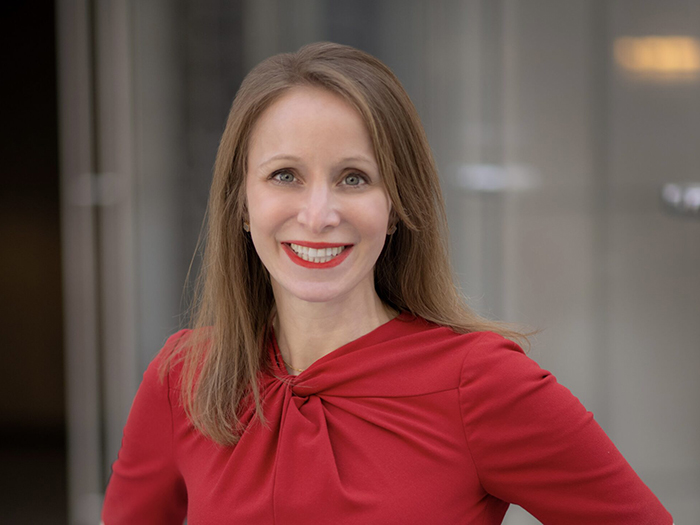From Linear to Squiggly: How Mentorship Is Supporting Non-Traditional Career Paths in the Insurance Industry
While nobody knows exactly what it will take to recruit, retain and develop the next generation of insurance professionals, this much is certain: The traditional paths that once brought people into our industry are evolving and are no longer the only option.
A recent study shows that only 51% of Gen Z teens are interested in pursuing a four-year college degree, down a full 20 percentage points from just three years ago. Today, teens and young adults are wary of taking on student loan debt.
This dilemma challenges employers to help young professionals gain the experience needed to secure steady pay. We have already seen progressive companies introduce apprenticeship programs to fill this need for high school and community college graduates.
In addition, adopting mentorship programs can help emerging leaders find their best path to future success. Implementing a sustainable mentorship program is even easier today than in the past thanks to the emergence of remote and hybrid work.
The Rise of “Squiggly” Career Paths
Many long-standing industry professionals fall into the mistaken belief that the only career path is linear.
The truth is that divergent career paths aren’t new. In fact, they’ve been a part of the workforce for decades. This is exemplified in many of the trades and military branches.
I learned the value of divergent career paths when a colleague shared a TED Talk earlier this year.
The nine-minute talk, hosted by bestselling authors and entrepreneurs Helen Tupper and Sarah Ellis, discusses what the hosts call “squiggly careers.” It’s an acknowledgement of the fact that most professionals’ career journeys take a myriad of twists and turns.
After rewatching the presentation, I realized I, too, had experienced a squiggly journey earlier in my career. While I was fortunate to discover human resources at a Fortune 500 company within the first two years of graduating from college, I experienced my “squiggle” when I relocated from the Midwest to California. I was eventually introduced to the insurance industry, where I was able to happily bring my passion for human resources.
The inherent value of a squiggly career path is not always obvious. When young professionals take a straight line and stay in one industry, they may gain a great deal of depth, but they also run the risk of becoming siloed.
In taking a squiggly path, young professionals will benefit by gaining breadth, giving them the ability to develop the interpersonal and problem-solving skills they’ll need when they find the right fit.
And, once they find the right vertical, that’s when they can add depth to that breadth.
Where Mentorship Fits In
One of my favorite moments from Tupper and Ellis’ TED Talk is the belief that we are all teachers and learners, regardless of where we are in our careers.
Over the last year, I have worked on a talent subcommittee for the Insurance Industry Charitable Foundation’s (IICF) IDEA Council, helping to create the organization’s first diverse Mentoring Alliance program.
In the program’s pilot, we carefully selected 10 protégés — emerging leaders from underrepresented communities — and paired them with diverse role models and allies across the industry.
The program specifically looked for protégés who were five to ten years into their career, the point where young professionals are often moving or preparing to move into their first leadership role.
The six-month pilot began in the fall of 2022 with an orientation, where we provided the mentors and protégés with a roadmap of exactly what to expect and introduced the Mentoring Alliance’s Code of Ethics.
We also armed mentors with reference tools and assigned a coach to each mentor-protégé pair in case they hit any bumps along their journey. Tupper and Ellis’ TED Talk was the subject of a spring educational session we offered to mentors and protégés in the program.
Feedback we received on the pilot program was positive, and some protégés expressed that they were sad to see it end.
As a result of this feedback, and to keep the momentum going, we are exploring the idea of creating an alumni group that would meet quarterly. We would also love to see protégés from the pilot program return as mentors.
As the IICF Mentorship Alliance prepares to start its second session this fall, we are always looking for new companies that want to join. I’d also encourage everyone in our industry to attend the IICF’s Inclusion in Insurance Global Conference in New York City from June 13 to 15, where we’ll continue important discussions around diversity, equity, inclusion, accessibility and, of course, mentorship.
Best Practices for Mentorship Programs
For companies looking to establish their own mentorship programs, here are a few best practices we have learned through creating the IICF Mentoring Alliance.
- Make the time: The purpose of a mentorship program is to encourage emerging leaders and help them get past the hurdles they may experience on their journey. To achieve this, both mentors and protégés must commit to giving 100%. When mentors and protégés are intentional, compassionate and sincere, they create meaningful experiences that benefit both parties.
- Embrace remote and hybrid mentorship: While some believe remote and hybrid work models can create barriers, we have found the opposite to be true when establishing the IICF Mentorship Alliance. Having the ability to connect remotely actually creates more opportunities. Because we conducted our pilot remotely, we didn’t have to worry about geography when we paired mentors with protégés. This allowed us to concentrate on making pairings which were truly best for both parties. We encouraged mentors and protégés to keep their cameras turned on during their remote mentoring sessions, and they were able to develop deep connections. In fact, one of the protégés recently told me she wants to meet her mentor in person, solely to hug her.
- Pass it on: I encourage everyone with leadership experience in our industry to become a mentor. Those in leadership have a wealth of wisdom and work experience to share, and young, emerging leaders are interested in discovering what they can learn from you. If you take the plunge and dedicate yourself to mentoring, I guarantee you’ll have an enriching experience.
As young professionals navigate their own unique paths into our industry, it is vital for employers to create environments and pathways which will help us recruit, retain and develop the next generation of insurance professionals.
When you commit to mentorship and implement a few proven best practices, you’ll create a program that will help you achieve those goals and set your company up for continued success. &










